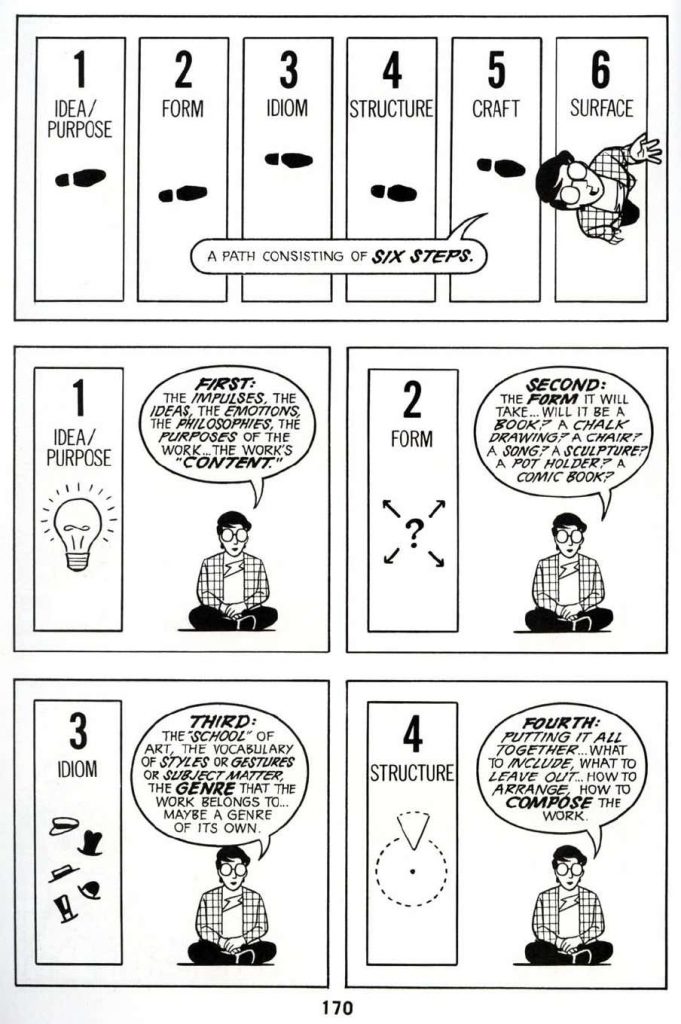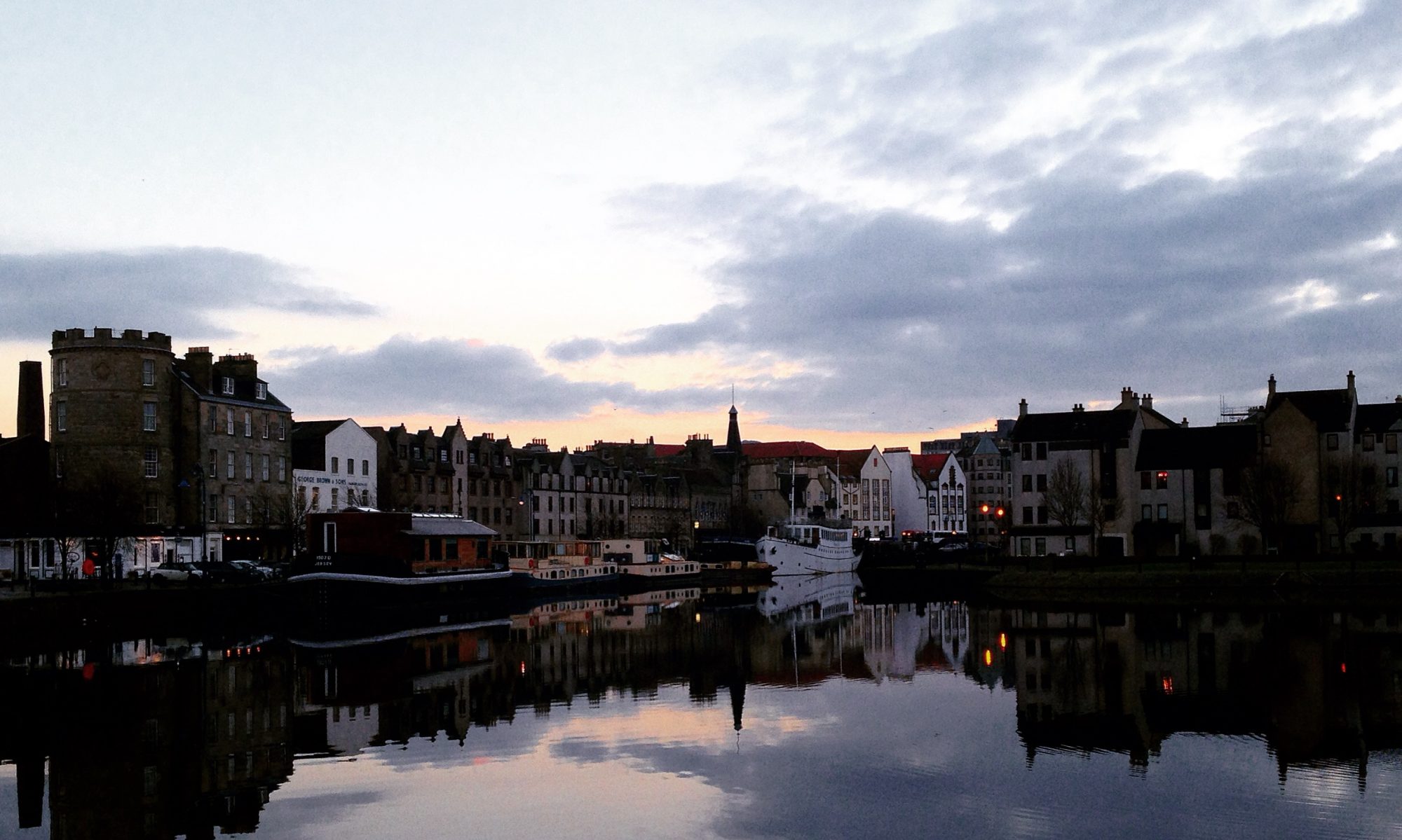Terms mostly deducted from from Scott Mcleod’s Understanding Comics.

Bleeding: When the panel–usually depicting action–runs off the panel to the edge of the page so we can see beyond that snippet in time.
Closure: Observing the parts but perceiving the whole. When we are only given a snippet of something we recognize, we often unconsciously piece together the image. There is a common test that does this with a sentence with each word misspelled but our brains automatically understand what is being said.
Comics: Mcleod defines comics as “juxtaposed pictorial and other images in deliberate sequence, intended to convey information and/or to produce an aesthetic response in the viewer.” However, he mentions that there is a lot missing from this definition as it leaves out many genres. He says the best word to describe comics is “sequentialart”.
Gutter (The): The space between panels. This resembles physical space, time, perspective and motion throughout a comic and signals the transition to the next action or scene.
Icon: any image used to represent a person, place, thing or idea.
Mask: When a character or object is done in a different stylistic effect than the background imagery. It’s often used to emphasize either the main character or something in the background.
Panel: An individual frame showing one action or idea of the comic.
Panel-to-Panel Transitions:
- Moment-to-Moment: requires very little closure
- Action-to-Action: single subject showing them/it in action from one panel to the next.
- Subject-to-Subject: shift between one subject to another but stays within the scene.
- Scene-to-Scene: transport us across distances of time and space.
- Aspect-to-Aspect: “bypasses” time with a place, idea or mood
- Non-Sequitur: no logical relationship between one panel the next
Pictures: Images designed to actually resemble their subjects. Meaning is fluid and variable.
Scripting: the narrative and dialogue of the comic — the story being told through words
Show and Tell:
- Word Specific: when the narrative or dialogue moves the story along more than the imagery.
- Picture Specific: when words just help the emphasize what the image is telling, often through the sound like the “mmm” to add to a kissing scene or a “zzz” to a sleeping scene.
- Duo-Specific: when words and images have equal parts in telling the story.
- Additive Combination: words or images elaborate on or amplify each other
- Parallel Combination: words and pictures follow different courses without intersecting
- Montage: words are integral parts of the picture
- Interdependent: go hand in hand to represent an idea that neither could convey alone
Synaesthetic: the viewer can experience sensations in one part of the body produced by the stimulus in another as an image that can evoke an emotional or sensual response in the viewer.
Treachery of Images: is a painting by surrealist painter René Magritte. It presents the notion of iconography or that an image for something is not that something, but rather the representation of something.
Viewer-identification: or “Application through Simplification” which is the idea that readers identify with characters that aren’t too specific or detailed. Without defining features, readers are able to picture themselves as the character and find similarities. Mcleod also mentions the vanity we as the human race have as we want to see ourselves in everything.
Word Balloon: the most widely-used, complex ways artists attempt to depict sound and even the non-verbal. Usually dialogue, not narrative.
